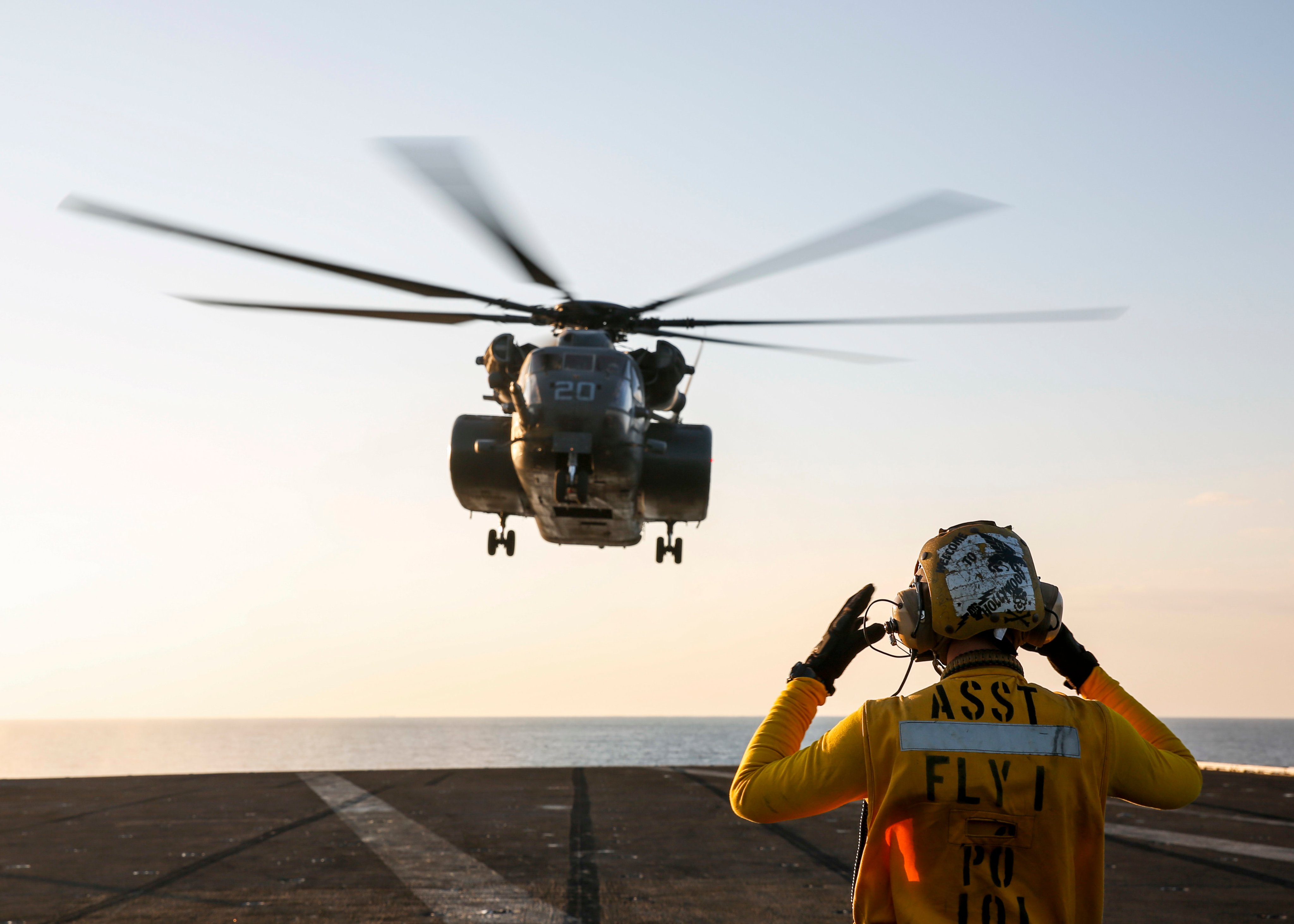On July 26, during the afternoon, a storm damaged several helicopters at Naval Station Norfolk in Virginia. This incident comes shortly after US Navy’s F/A-18 Super Hornet was ‘blown away’ into the Mediterranean Sea.
Warning To China? Taiwan Releases Terrifying Images Of Its ‘Secret Underground Tunnel’ With F-16 Vipers & Harpoon Missiles
‘World Is A Customer’ – Russia, UAE Keen To Acquire Bayraktar Drones; Bangladesh Signs Deal On Turkish UCAVs — Reports
Several images that have surfaced on social media show the aircraft’s external damage. A Naval Air Force Atlantic spokesperson said the helicopters at Chambers Field, which were on the airfield’s deck following a severe storm, were damaged.
Several U.S. Navy helicopters were damaged during storms that came through Hampton Roads on Tuesday.
?: WAVY viewer
Read more: https://t.co/6SRmlsQPrG pic.twitter.com/Ok0n8IO0xW
— WAVY TV 10 (@WAVY_News) July 27, 2022
The National Weather Service released a severe thunderstorm alert for the nearby areas at 3:30 pm. According to WAVY, a local NBC affiliate in Virginia informed the locals of the possibility of wind gusts of 60 miles per hour.
In the images currently making rounds online, MH-60S and MH-53E helicopters are visible among the helicopters that were knocked over by the strong winds.
Naval Air Force Atlantic said in a statement to Navy Times that nine helicopters, including the MH-60S and MH-53E, sustained damage due to the storm. The damage includes structural dents and punctures in the airframes and broken tail and rotor blades.
The twin-engine MH-60S helicopter primarily performs fleet logistics support, anti-submarine warfare, search and rescue operations, and anti-ship operations.
The MH-53E mainly conducts two missions; Airborne Mine Countermeasures (AMCM) and Navy heavy lift/Vertical Onboard Delivery (VOD).
This incident comes weeks after a Navy F/A-18 Super Hornet jet “blew overboard” in the Mediterranean Sea off the aircraft carrier Harry S. Truman. The Navy blamed heavy rains and strong winds for the mishap, which is being investigated.

On the other hand, USNI reported that at least 10 Navy helicopters sustained damage in the incident. According to the initial evaluation, all ten helicopters reportedly had Class A mishaps.
According to the US military, Class A accidents cause at least $2.5 million in damage, at least one fatality, or both. The Navy has stated that no injuries were sustained due to these storms, so classifications would have been based on the degree of damage.
MH-53E Sea Dragon
The MH-53E Sea Dragon is the primary aircraft used by the American Navy for aerial mine countermeasures. The MH-53E is a modified version of the CH-53 Sea Stallion and is heavier and has a bigger fuel tank than its predecessor.
The MH-53 is capable of operating from carriers and other warships. It can also carry a range of mine hunting/sweeping countermeasures systems, such as the Mk 105 magnetic minesweeping sled, the AQS-14A side-scan sonar, and the Mk 103 mechanical minesweeping system.
The MH-53E can be equipped with the GAU-21 ramp-mounted weapon system to carry out the assault support mission.

However, the helicopter is one of the military’s most accident-prone aircraft. The worst MH-53 accident happened in 1988. There were eight deaths among the sailors. Likewise, MH-53Es crashed in 2000, twice in 2002, once in 2003, and again in 2005 and 2008.
Despite the Sea Dragon’s high rate of accidents, the Navy supported it for a long time. Captain Todd Flannery(Retd), former commander of Helicopter Sea Combat Wing Atlantic, stated in 2014 that “the MH-53E has been a workforce for the Navy for [many years]. I am confident and proud of the contributions the Sea Dragon has made, and I look forward to its continued service to the fleet.”
MH-60S Seahawk
In service since February 2002, the Sikorsky MH-60S Knighthawk helicopter can perform a variety of tasks. The US Navy uses the MH-60S helicopters to perform airborne mine countermeasures, vertical replenishment, combat search and rescue, and warfare support.
In August 2002, full-rate production of the helicopter started. In January 2003, several MH-60S helicopters were deployed to support Operation Iraqi Freedom.
The first deployment of the new helicopter occurred on board USS Essex, an amphibious assault ship of the Wasp class.

The helicopter was given the initial designation CH-60S to replace the Boeing CH-46D Sea Knight heavy-lift helicopters used by the US Navy for vertical replenishment. Later, the MH-60S designation was given to the helicopter because the mission’s requirements were expanded to include a range of additional combat support capabilities.
MH-60s, like helicopters, frequently operate near the surface in rough seas where operations can be complicated by turbulence and strong crosswinds. For instance, different types of submarine hunting rely on lowering sonobuoys from heights just above the water using maritime-specific helicopters like the Seahawk.
- Contact the author at ashishmichel@gmail.com
- Follow EurAsian Times on Google News




